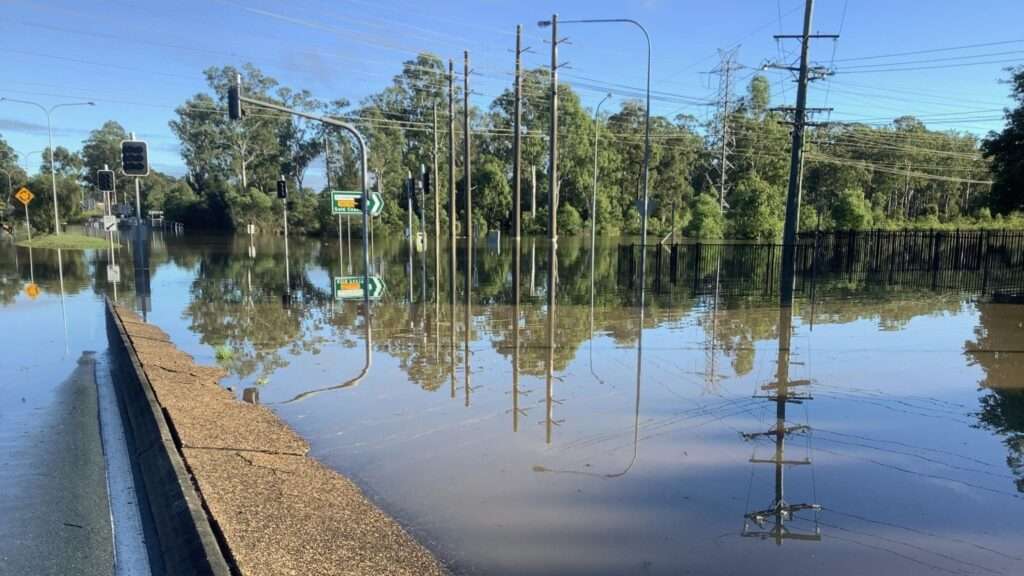The death toll from week-long floods battering Australia’s east coast has risen to 20 on Tuesday, March 8, 2022, after the bodies of a man and a woman were discovered in floodwaters in Sydney.
Police disclosed that it was “suspected” the pair is a missing mother and son whose car was abandoned in a stormwater canal.
Already, tens of thousands of Sydney residents are being asked to evacuate their homes as severe storms and flash flooding overwhelmed the paths of Australia’s largest city, Brisbane, as of Tuesday, March 8, 2022.
According to Emergency Services, the national weather bureau warned of “a tough 48 hours ahead” for Sydney, with 60,000 people subject to evacuation orders and warnings across the affected areas.
Intense rainfall across Sydney flooded bridges and homes, sweeping away cars and even collapsed the roof of a supermarket.
The Manly Dam, located in the city’s north, began to spill on Tuesday, March 8, 2022. The situation has compelled authorities to signal 2,000 residents to evacuate.
In the riverside suburb of Georges Hall, vehicles were semi-submerged and the police helped to rescue stranded persons in their cars by rising floodwaters.
How far has the situation gone?
Efforts by state Emergency Services have proved little effort as the torrential rain and intense storms continued into a second week, with flood warnings in place for the entire 2,000-kilometre (1,250-mile) coastline of New South Wales.

Emergency Services Spokesperson, Phil Campbell told the media that “It’s very much the watery equivalent of the ‘Black Summer’ bushfires.”
Campbell also revealed that in the past week, the scale of the damage to property and wildlife is similar to those devastating bushfires, which ravaged Australia’s east for months in late 2019 and early 2020.
“We have also had a similar effect on communities in terms of dislocation with roads closed, infrastructure damaged, power outages.”
Emergency Services Spokesperson, Phil Campbell
In the past 24 hours, Emergency Services have received calls to 100 flood rescues across the state, which is expected to rise as the full force of the storm bears down on Tuesday, March 8, 2022, in Sydney.
A long, slow cleanup is underway in the northern reaches of New South Wales, where floodwaters destroyed homes, washed away cars and stranded hundreds of locals on their roofs.
State Emergency Services Commissioner, Charlene York, intimated that there are 800 people in emergency accommodation in the state’s Northern Rivers region alone. Emergency Services also said almost half of the 5,000 flood-ravaged homes inspected in the region in the wake of the disaster are uninhabitable.
In Mullumbimby, a town cut off from phone service, internet and outside help for days by the floods, on local, Casey Whelan in an interview with the media averred “lots of people in my street can’t get flood insurance”.
Australia has been at the sharp end of climate change, with droughts, deadly bushfires, bleaching events on the Great Barrier Reef, with floods becoming more common and intense as global weather patterns continue to change.
Background to the Flood
Australia’s Queensland and New South Wales were hit by extreme flooding following days of rain, including “rain bombs.”
The Centre for Disaster Philanthropy (CDP) noted in a report that the event “occurs when the air hits the ground at such force that it creates tornado-strength winds.”
On February 24, 2022, a rain bomb fell in Brisbane, Queensland’s capital and Australia’s third-most populous city, which knocked over powerlines and caused widespread destruction in a matter of hours.
READ ALSO: President Akufo-Addo To Deliver A Statement On “Ghana Day” At Dubai Expo




















